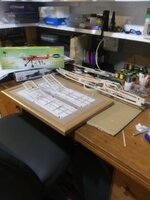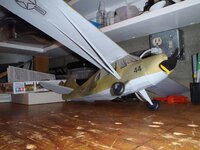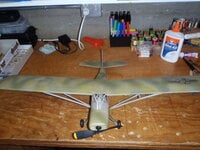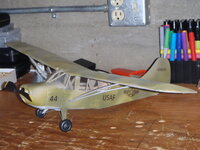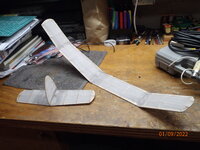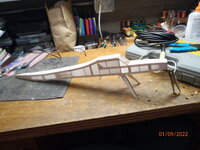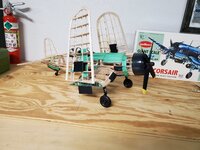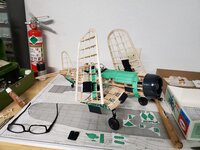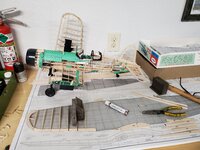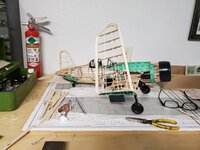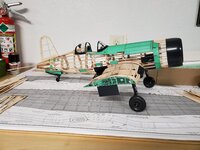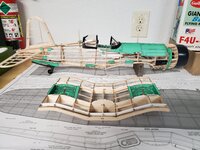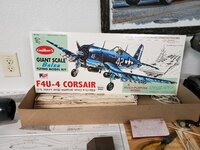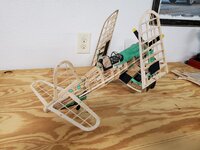bdefen
Senior Airman
I'm in the process of a leisurely build of a Guillow's Lancer balsa flying model. Might not even fly very well when I'm done, but I enjoy the process as a nice change from plastic models. I built a Guillow's Aeronca Champion about three years ago, with pseudo-SE Asian theater USAF livery. Haven't tried to fly it. Both rubber powered. See photos.
I've seen balsa WW2 fighter kits for sale, and wonder about their relative authenticity especially considering my moderate skills. However, it seems to me that the Fieseler Storch would make a reasonably authentic balsa model, since its largely fabric-over-frame construction and appearance is a lot like a balsa and tissue model. One Storch kit I've found is by Dumas. $40 to $50. I'm not ready to make the leap to radio controlled flight. Just enjoy the build.
I'm just looking for thoughts or opinions on balsa WW2 models from the learned crew out there. Please opine.
Thanks in advance
I've seen balsa WW2 fighter kits for sale, and wonder about their relative authenticity especially considering my moderate skills. However, it seems to me that the Fieseler Storch would make a reasonably authentic balsa model, since its largely fabric-over-frame construction and appearance is a lot like a balsa and tissue model. One Storch kit I've found is by Dumas. $40 to $50. I'm not ready to make the leap to radio controlled flight. Just enjoy the build.
I'm just looking for thoughts or opinions on balsa WW2 models from the learned crew out there. Please opine.
Thanks in advance

